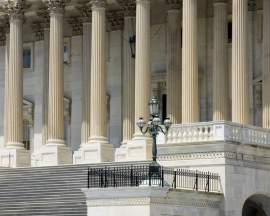
National Labor Relations Act

Popular In Employment
Kentucky Labor Laws Breaks Massachusetts Labor Laws Breaks Washington Labor Laws Breaks Michigan Labor Laws Breaks Alabama Labor Laws Breaks Employment Law Illinois Labor Laws Breaks Age Of A Cashier Preemployment Screening Fair Labor Standards Act Employment Guide Missouri Labor Laws Breaks
NATIONAL LABOR RELATIONS ACT TEXT
What is the National Labor Relations Act of 1935?7
The National Labor Relations Act of 1935 (Public Law 74-198) is also known as the Wagner Act, after New York Senator Robert Wagner who introduced the bill. This bill codified a number of protections for non-farm, non-governmental employees to organize and collectively bargain with employers. This legislation became law on July 5th, 1935 and also enforced standards of conduct against employers that might sanction or retaliate against workers that form unions. Additionally, the National Labor Relations Act facilitated the creation of the National Labor Relations Board that maintains regional offices to help workers in various locations organize, file complaints and collectively bargain.
What are the provisions of the National Labor Relations Act?
This Act ensured the rights of employees to collectively bargain, choose their labor representative and negotiate the terms of their employment. This includes all workers, unionized or otherwise. This protection is stated in Section 1 of the bill.
The National Labor Relations Act defines five unfair labor practices in Sections 7 and 8:
- Abridging the rights of employees to associate and organize into a labor organization that would collectively bargain for fair wages and working conditions
- Interfering or coercing members of a labor organization
- Discrimination against employees that support or oppose a union
- Discrimination against employees that exercise their rights to testify against their employer
- Refusal to allow required collective bargaining with union officials.
The most prominent and important provision by far is the emphasis on collective bargaining with rules governing the responsibility of the employer during collective bargaining, the selection and representation of the workers during the meetings and the clear definition of employees as a class independent of their employer.
What is collective bargaining?
Collective bargaining is the process by which employers and employee representatives meet and negotiate terms of employment such as wages, benefits and dispute resolution mechanisms. The right to collective bargaining is generally guaranteed by law and expressed in employer-employee contracts and agreements. Some workers, such as public servants, do not have the right to collectively bargain, as the nature of their jobs differ, working for taxpayers. Public workers however, receive better protections against arbitrary and unfair employer practices by nature of built in safeguards and protections for government employees. Collective bargaining agreements are agreed upon for a number of years and are revisited before their expiration to determine new terms.
How is the National Labor Relations Act enforced?
The National Labor Relations Board is the supervisory body that manages the formation of unions and prosecutes violations of the National Labor Relations Act. Under the watch of the NRLB, unionized and non-unionized workers alike are guaranteed federal protections to demand better wages and conditions. This includes protections against employers as well as labor unions themselves that may potentially prevent their members from organizing against an employer.
The National Labor Relations Board also provides a number of services for workers, not the least of which is holding elections to certify and decertify unions. Through NLRB regional offices, a secret ballot election is held among eligible workers and at least 30% of employees must participate in the election. If a majority is achieved, then the NRLB will declare a union that has collective bargaining rights for the employee against the employer. The rules for these elections are usually determined by the involved parties, but the NRLB will facilitate and oversee the election for fairness and transparency.
Alternatively, employees may seek recognition of a union without the aid of the NLRB through a majority agreement with the workers, voluntarily accepted by the employee. In this event, workers retain the right to have a secret ballot referendum on the voluntarily accepted union under the auspices and supervision of the NRLB. In the event that parties or individuals are dissatisfied with the NRLB office, they many contact the parent organization in Washington DC for a review of the case. If the case passes the scrutiny of an attorney and supervisors, it is considered by the governing board.
The NRLB maintains 34 local offices serving all fifty states across state boundaries to take regional and population distribution into consideration. The San Francisco office, for example, services Northern California, with a representative in Hawaii for logistical efficiency. Los Angeles has two NRLB offices that split up Southern California. Every office maintains dispute resolution services and administers rulings over illicit employer dealings. Online, the NRLB maintains guides for employers and employees to remain within the boundaries of the law.
What are criticisms of the National Labor Relations Act?
Aside from initial reactions of the Act as supporting the spread of socialism in organized labor, the National Labor Relations Act garnered opposition for favoring unions over employees in what ought to be impartial negotiations. Additionally, before the merger of the American Federation of Labor and the Congress of Industrial Organizations, there was a split between allowing plant-wide elections for union formations or relegating union formation for specific sets of workers, with similar skills and demands. The NLRB initially favored the latter approach to union building.
The constitutionality of the National Labor Relations Act was challenged by the Jones & Laughlin Steel Corporation and the case eventually reached the Supreme Court. The company had fired ten workers for attempting to unionize and the NRLB ruled in favor of the fired employees. The company decided to challenge the enforceability of the decision. The Supreme Court affirmed the right of the federal government to regulate relations between employers and their employees by way of the interstate commerce clause to prevent the obstruction and burdening of commerce between states.
How has the National Labor Relations Act been amended?
The 1947 Taft-Hartley Act was passed with the intention of halting some of the rights given to unions to strike and imposing limitations on the union leaders. Certain types of strikes were outlawed, such as “wildcat striking” which was striking without union approval. Additionally, “closed shop” workplaces that mandated that all employees join a union were made illegal. “Right to work” laws further protect employees from mandatory membership in labor unions and these laws are effective in 22 states, many in the South and Plains states. The intention of these laws is to stop “forced unionism” and blunt the power of unions in a system that is argued to favor unions over employers. Critics argue that such measures create a class of unrepresented workers that receive unequal treatment, sometimes positive, sometimes negative due to their lack of union representation.
The Taft Hartley Act has been viewed as an unfair infringement on the rights of workers in the workplace by limiting their ability to strike and creating fractured union solidarity as some employees will choose not to join the union. This will either weaken the union’s position or create a free rider problem, with non-union workers benefiting from paid dues and workplace improvement gains made by union workers, in spite of not paying to financially support then union.
In 2009, the provisions of the Act were modernized to decrease potential delays in collective bargaining and to strengthen penalties against employers that intimidate employees away from union membership.
Timeline of important events
1932 Norris-La Guardia Act
Employers must not contractually ban a worker from joining a labor union when considering employment.
1935 National Labor Relations Act
This act provided significant protections for unionized workers and demonstrated a process by which they could collectively bargain for their rights.
1937 National Labor Relations Board v. Jones & Laughlin Steel Corporation
The National Labor Relations Act is held constitutional by the interstate commerce clause and employers may not retaliate against employees for organizing for better wages and conditions.
1947 Taft Hartley Act
In response to a number of post-war labor disruptions, this act limited actions that unions and union members could take and set the precedent for right to work laws that ended forced unionism for all workers.



















